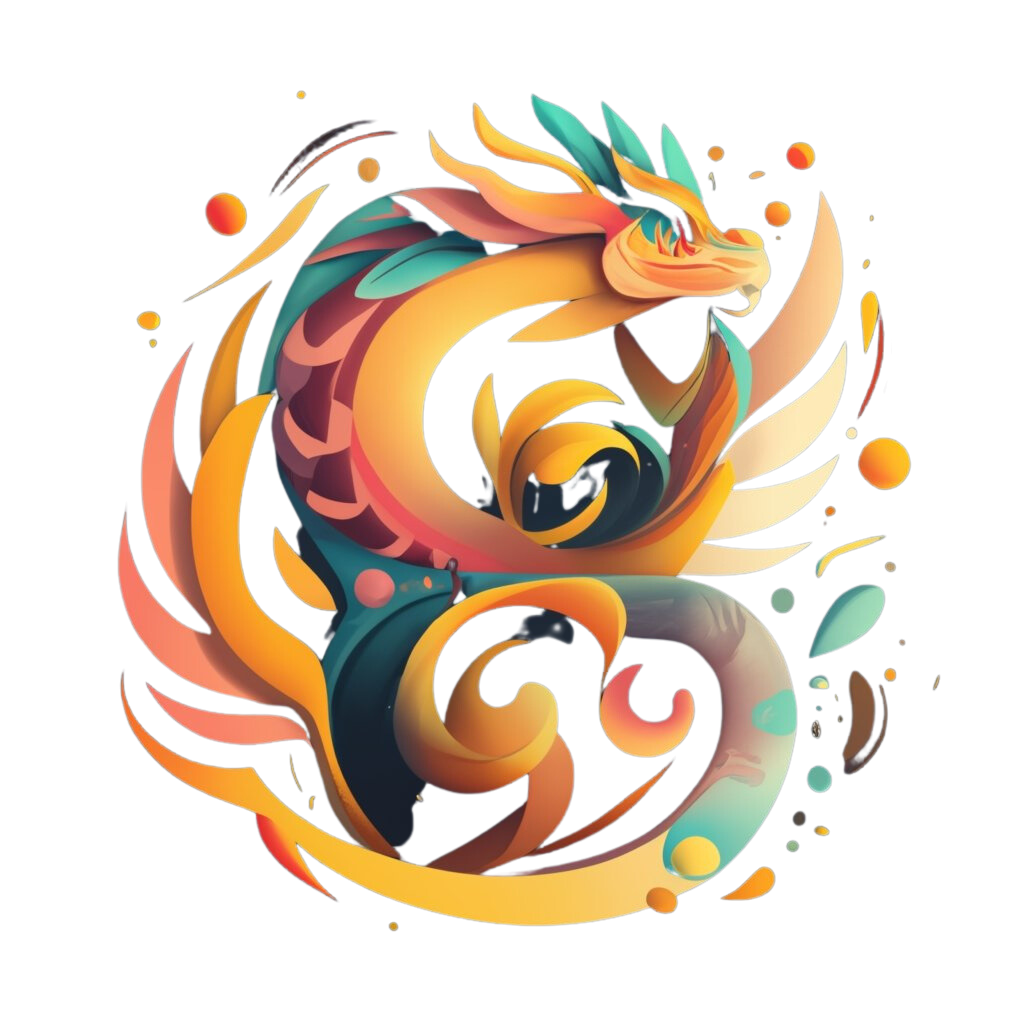Colombia's storytelling tradition, shaped by the Andes, Amazon, and Afro-Colombian culture, is rich with legends passed down for centuries. The country's diverse history — from Indigenous tribes to African and Spanish influences- has given rise to a world of fascinating mythical beings.
This article explores the most iconic Colombian mythical creatures, their origins, and the lessons they carry. These stories reveal how folklore continues to shape Colombian culture.
You can also explore mythical creatures from around the world to see how Colombia’s legends compare with those of other cultures.
The Origins of Colombian Mythology: Where Do These Creatures Come From?
Colombian mythology blends the traditions of Indigenous peoples and Spanish colonizers. These cultural layers created a vibrant folklore where each mythical creature reflects both fear and respect for nature and the spiritual world.
Influence of Indigenous Tribes
Tribes such as the Muisca, Wayuu, and Tikuna have shaped Colombia’s mythological landscape. Their stories often feature spirits connected to rivers, forests, and the sky.
Muisca Legends: Known for advanced astronomy and agriculture, the Muisca told stories about the creation of the world and the gods associated with natural phenomena.
Wayuu Legends: The Wayuu of the Guajira Peninsula share myths of spirits and desert guardians, often tied to family and community.
Afro-Colombian Roots and Catholic Overlays
African traditions blended with Indigenous beliefs, adding new spirits and magical practices. When Spanish colonizers brought Catholicism, many local myths adapted to include Christian saints and moral lessons.
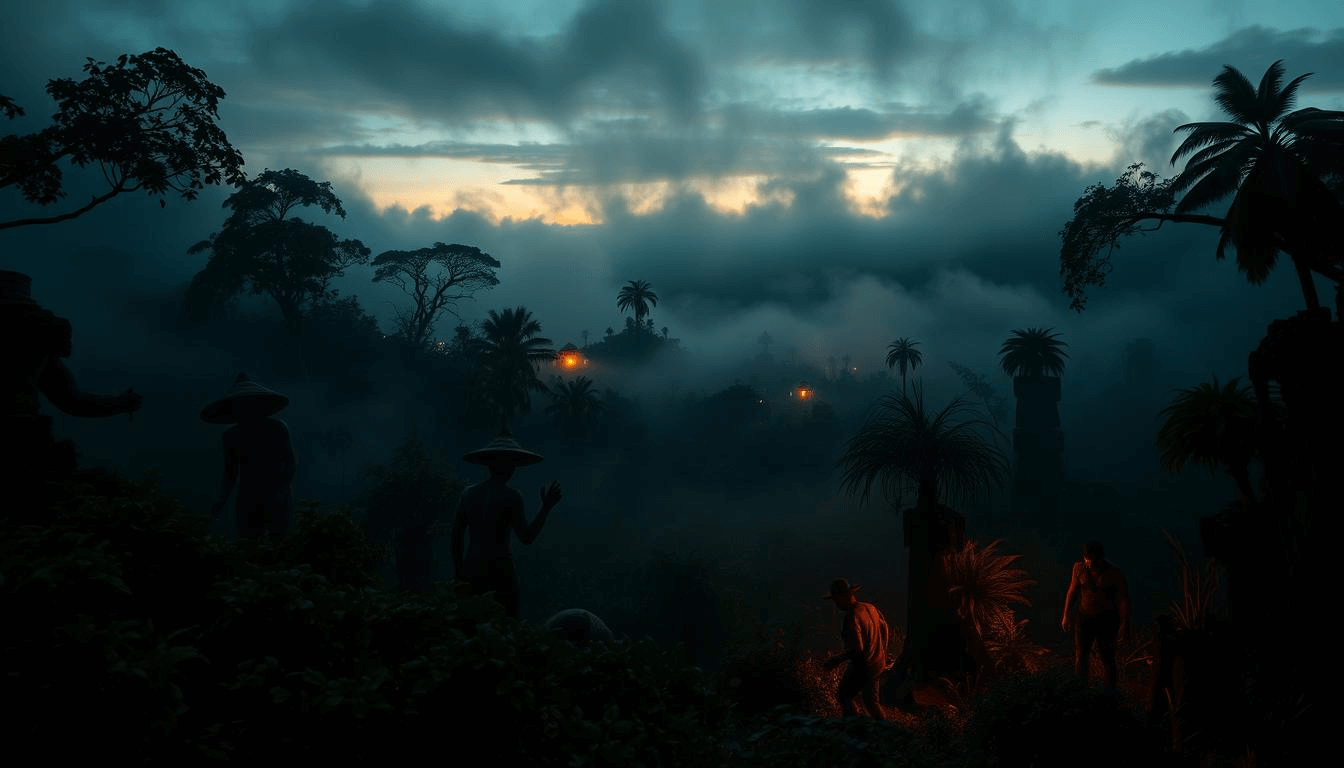
Cultural Influence | Mythological Contribution |
Indigenous Tribes (Muisca, Wayuu, Tikuna) | Stories of creation, natural phenomena, and ancestral spirits |
Afro-Colombian | Introduction of African ancestral spirits and traditions |
Catholicism | Incorporation of Christian beliefs and saints into existing mythology |
This fusion of cultures gave rise to legends like El Mohán, La Llorona, and Madremonte, which remain iconic across Colombia.
10 Legendary Colombian Mythical Creatures You Should Know
Colombian folklore is filled with creatures that are both fascinating and terrifying. These legends reflect cultural values, warnings, and deep respect for nature. If you’re intrigued by Latin American legends, you might enjoy our feature on Brazilian mythical creatures, which share similar cultural roots.
El Mohán – River Sorcerer
El Mohán is a mythical creature known for seducing women and protecting fish in the rivers. Originating from the Tolima region, this sorcerer is often depicted as a wild man with long hair and a mischievous smile.
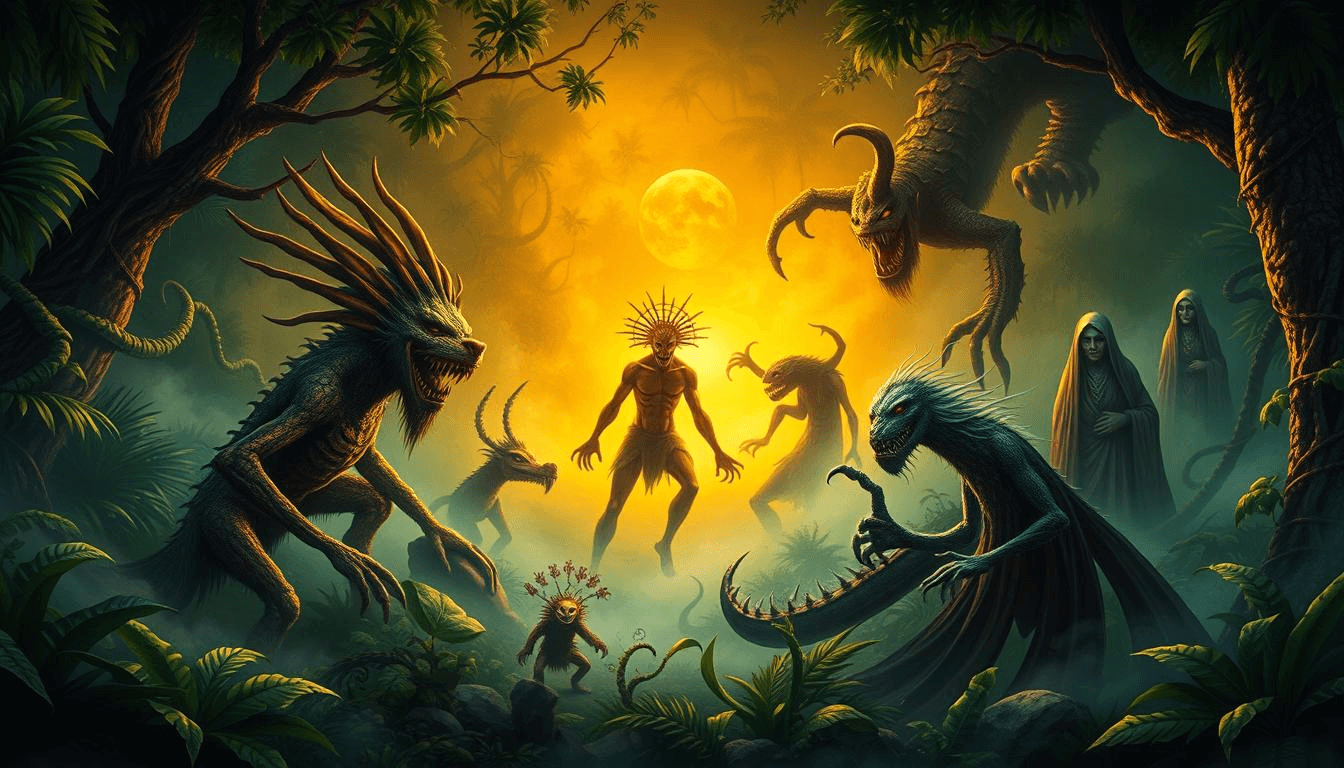
La Llorona – The Weeping Woman
La Llorona, or "The Weeping Woman," is a ghostly figure who roams rivers, crying for her lost children. This creature is a familiar figure in many Latin American countries, including Colombia, where she is seen as a symbol of maternal grief and loss.
Madremonte – Jungle Protector
Madremonte, or “Mother of the Jungle,” is a towering woman covered in leaves and moss. She punishes those who trespass or harm the natural environment. She is revered in regions like the Amazon for her role in maintaining the balance of nature.
El Hombre Caimán – Man Turned Caiman
El Hombre Caimán is a legend from the Caribbean coast, telling the story of a man cursed and transformed into a caiman as punishment for his misdeeds. It warns against harmful actions, especially toward women.
Other Notable Creatures
- La Patasola: A one-legged spirit who lures men into the forest.
- El Cuero: A cowhide creature that comes to life to scare people.
- La Madre de Agua: A water spirit believed to drown people.
- El Duende: A mischievous goblin that plays tricks and hides children.
- La Tunda: A shapeshifter who kidnaps people by imitating loved ones.
- El Riviel: A creature associated with chaos and fear.
Creature | Region | Symbolic Meaning |
El Mohán | Tolima | Seduction, Protection of Nature |
La Llorona | National | Maternal Grief, Loss |
Madremonte | Amazon | Protection of Jungle, Punishment |
El Hombre Caimán | Caribbean Coast | Punishment for Bad Behavior |
Themes in Colombian Folklore: What Do These Creatures Represent?
Colombian folklore is rich in mythical creatures that embody various themes and symbolisms deeply rooted in the country's cultural heritage. These creatures are not just mere figments of imagination but representations of the values and moral lessons that have been passed down through generations.
Common Themes in Colombian Folklore
The mythical creatures of Colombia often symbolize common themes such as punishment for bad behavior, respect for nature, and warnings against betrayal. For instance, La Llorona, or "The Weeping Woman," is a ghostly apparition who haunts rivers and lakes, crying for her lost children. Her story serves as a cautionary tale about the consequences of one's actions, particularly about family and children.
Another common theme is the respect for nature, as seen in the legend of Madremonte, a protector of the jungle who punishes those who trespass or harm the natural environment. This highlights the importance of preserving nature and respecting the land.
Symbolism Behind the Creatures
The creatures in Colombian folklore also carry significant symbolism. For example, femininity is a powerful theme, often represented through female figures like La Llorona and Madremonte. These characters embody the nurturing and protective aspects of femininity, as well as the consequences of actions driven by emotions like grief and revenge.
The concept of transformation is another significant theme, as seen in the story of El Hombre Caimán, a man turned into a caiman as punishment for his misdeeds. This transformation symbolizes the change that can occur as a result of one's actions, serving as a moral lesson.
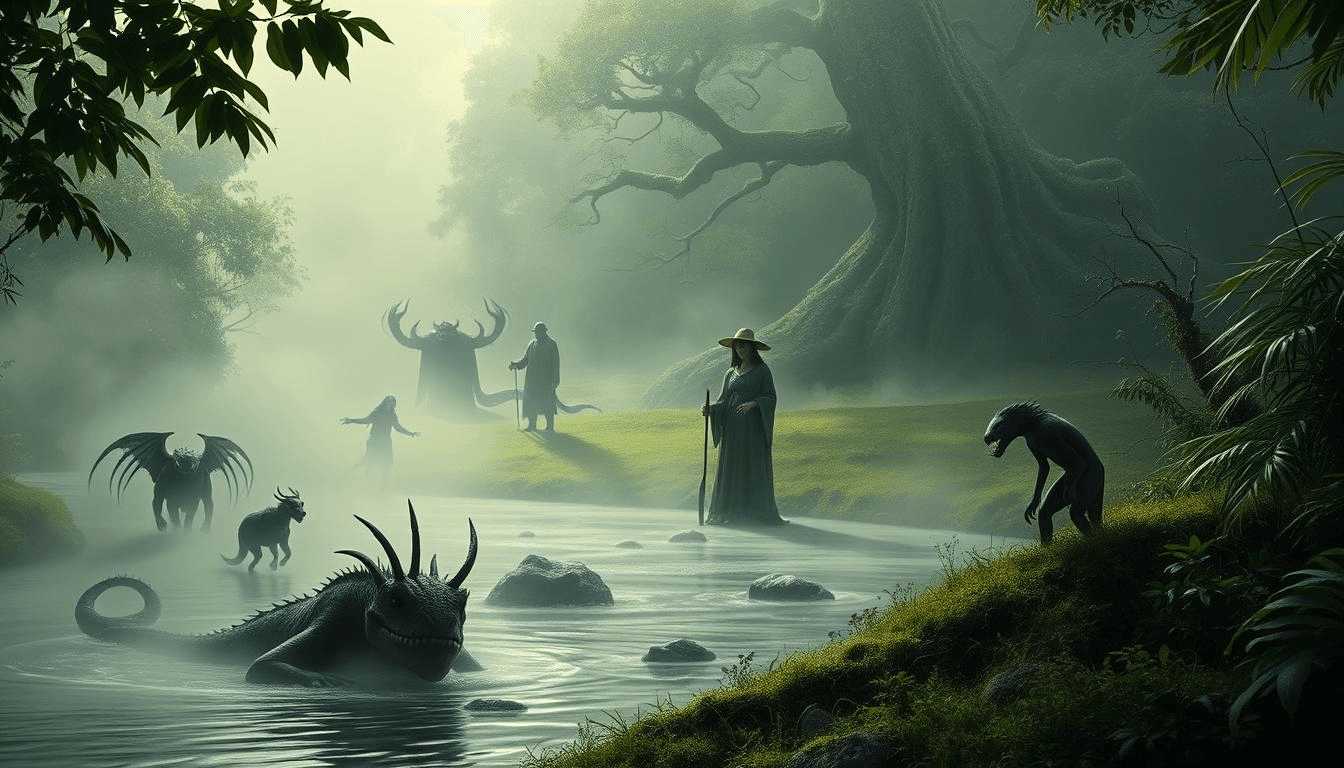
Creature | Symbolism | Theme |
La Llorona | Femininity, Revenge | Punishment for bad behavior |
Madremonte | Wild Nature, Protection | Respect for nature |
El Hombre Caimán | Transformation, Punishment | Consequences of actions |
To explore how similar themes appear in other European folklore, take a look at our Portuguese mythical creatures article.
The Regions Behind the Myths: Are These Creatures Based on Real Places?
Colombia's geography has given rise to a variety of mythical beings, each associated with a particular region. For instance, El Mohán, a river sorcerer known for seducing women and protecting fish, is closely linked to the Tolima region. The myth of El Mohán is said to have originated from the indigenous tribes of Tolima, who revered the rivers and their inhabitants.
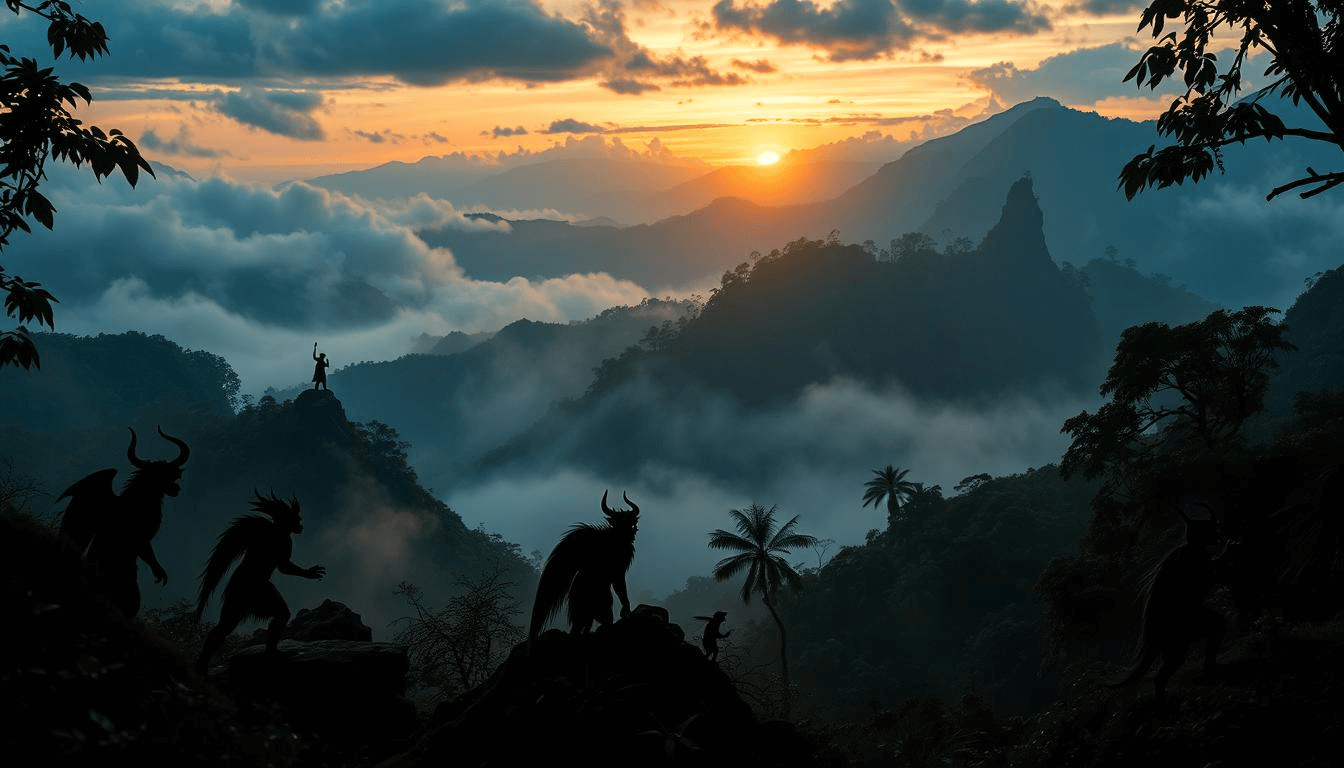
Another significant mythical creature is Madremonte, the protector of the jungle, which is associated with the Amazon region. Madremonte is believed to punish those who trespass or harm the jungle and its inhabitants, reflecting the Amazonian respect for nature.
El Hombre Caimán, or "The Caiman Man," is a mythical creature from the Caribbean Coast. According to legend, a man was turned into a caiman as punishment for his misdeeds, symbolizing the consequences of bad behavior.
FAQs About Colombian Mythical Creatures
Are Colombian mythical creatures still believed today?
In rural areas, many still believe these beings exist. Stories of La Llorona or El Mohán are often shared as cautionary tales.

Which creature is considered the most feared in Colombia?
La Llorona, or "The Weeping Woman," is considered one of the most feared for her chilling cries and ghostly presence.
Do Colombian myths vary by region?
Yes, myths like Madremonte are tied to the Amazon, while El Hombre Caimán comes from the Caribbean coast.
Are any of these creatures considered protective spirits?
Some Colombian mythical creatures are indeed regarded as protective spirits. For example, Madremonte is seen as a guardian of the jungle, punishing those who harm the environment or disrespect its power.
Conclusion
Colombian myths connect the past with the present, teaching respect for nature and family. These stories remain vital to understanding the country’s culture and values.
